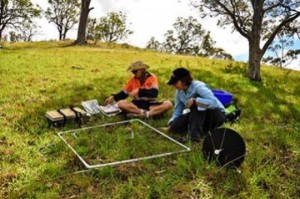Summary:Biodiversity — the essential variety of life forms on Earth — continues to decline in every region of the world, significantly reducing nature’s capacity to contribute to people’s well-being. This alarming trend endangers economies, livelihoods, food security and the quality of life of people everywhere, according to four landmark science reports written by more than 550 leading experts, from over 100 countries.
Biodiversity — the essential variety of life forms on Earth — continues to decline in every region of the world, significantly reducing nature’s capacity to contribute to people’s well-being. This alarming trend endangers economies, livelihoods, food security and the quality of life of people everywhere, according to four landmark science reports released today, written by more than 550 leading experts, from over 100 countries.
The result of three years of work, the four regional assessments of biodiversity and ecosystem services cover the Americas, Asia and the Pacific, Africa, as well as Europe and Central Asia — the entire planet except the poles and the open oceans. The assessment reports were approved by the Intergovernmental Science-Policy Platform on Biodiversity and Ecosystem Services (IPBES), in Medellín, Colombia, at the 6th session of its Plenary. IPBES has 129 State Members.
“Biodiversity and nature’s contributions to people sound, to many people, academic and far removed from our daily lives,” said the Chair of IPBES, Sir Robert Watson, “Nothing could be further from the truth — they are the bedrock of our food, clean water and energy. They are at the heart not only of our survival, but of our cultures, identities and enjoyment of life. The best available evidence, gathered by the world’s leading experts, points us now to a single conclusion: we must act to halt and reverse the unsustainable use of nature — or risk not only the future we want, but even the lives we currently lead. Fortunately, the evidence also shows that we know how to protect and partially restore our vital natural assets.”
The extensively peer-reviewed IPBES assessment reports focus on providing answers to key questions for each of the four regions, including: why is biodiversity important, where are we making progress, what are the main threats and opportunities for biodiversity and how can we adjust our policies and institutions for a more sustainable future?
In every region, with the exception of a number of positive examples where lessons can be learned, biodiversity and nature’s capacity to contribute to people are being degraded, reduced and lost due to a number of common pressures — habitat stress; overexploitation and unsustainable use of natural resources; air, land and water pollution; increasing numbers and impact of invasive alien species and climate change, among others.
Declining Biodiversity — Now and in the Future
The Americas
“In the Americas, rich biodiversity makes an immense contribution to the quality of life, helping to reduce poverty while strengthening economies and livelihoods,” said Dr. Jake Rice (Canada), co-chair of the Americas assessment with Dr. Cristiana Simão Seixas (Brazil) and Prof. Maria Elena Zaccagnini (Argentina).
“The economic value of the Americas’ land-based nature’s contributions to people is estimated to be more than US$24 trillion per year — equivalent to the region’s GDP, yet almost two-thirds — 65% — of these contributions are in decline, with 21% declining strongly. Human-induced climate change, which affects temperature, precipitation and the nature of extreme events, is increasingly driving biodiversity loss and the reduction of nature’s contributions to people, worsening the impact of habitat degradation, pollution, invasive species and the overexploitation of natural resources.”
According to the report, under a ‘business as usual’ scenario, climate change will be the fastest growing driver negatively impacting biodiversity by 2050 in the Americas, becoming comparable to the pressures imposed by land use change. On average today, the populations of species in an area are about 31% smaller than was the case at the time of European settlement. With the growing effects of climate change added to the other drivers, this loss is projected to reach 40% by 2050.
The report highlights the fact that indigenous people and local communities have created a diversity of polyculture and agroforestry systems, which have increased biodiversity and shaped landscapes. However, the decoupling of lifestyles from the local environment has eroded, for many, their sense of place, language and indigenous local knowledge. More than 60% of the languages in the Americas, and the cultures associated with them, are troubled or dying out.
More: Science Daily





